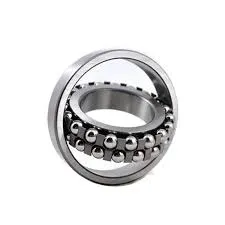
Dec . 23, 2024 18:59 Back to list
deep groove ball bearing material
Deep Groove Ball Bearing Materials An Overview
Deep groove ball bearings are vital components in various mechanical applications, providing support for rotating shafts and reducing friction between moving parts. These bearings are characterized by their deep raceway grooves that allow them to accommodate both radial and axial loads. The performance and longevity of deep groove ball bearings heavily depend on the materials used in their construction. This article explores the primary materials utilized in the manufacturing of deep groove ball bearings, their properties, and the implications for performance in various applications.
Common Materials Used in Deep Groove Ball Bearings
1. Steel The most common material for deep groove ball bearings is high-carbon chromium steel, often referred to as bearing steel. This steel is alloyed to enhance its hardness and wear resistance, essential characteristics for bearing performance. A typical grade used in the industry is AISI 52100, which has a high carbon content and achieves hardness levels up to 64 HRC (Rockwell Hardness Scale). The superior fatigue strength and excellent surface finish make steel an optimal choice for most applications.
2. Stainless Steel For environments susceptible to corrosion, stainless steel bearings are preferred. Typically made from AISI 440C stainless steel, these bearings offer enhanced resistance to oxidation and rust, making them suitable for applications in moist or corrosive environments. However, while stainless steel provides superior corrosion resistance, its hardness is often slightly less than that of bearing steel, which may lead to different performance characteristics under specific conditions.
3. Ceramic Ceramic materials, such as Silicon Nitride (Si3N4), are increasingly used in advanced applications due to their exceptional properties. Ceramic balls are significantly lighter than steel and offer lower density, which contributes to reduced centrifugal forces. Additionally, ceramics exhibit excellent wear resistance and a lower coefficient of thermal expansion, enhancing their dimensional stability at varying temperatures. These attributes make ceramic bearings particularly suitable for high-speed applications and environments that experience extreme temperatures.
4. Polymeric Materials In some specialized applications, polymeric materials like polyamide (Nylon) or polytetrafluoroethylene (PTFE) are used. These materials are lightweight, offer good resistance to chemicals, and can provide low friction properties. However, polymeric bearings are generally used in low-load or lightweight applications, as they do not carry the same load-bearing capacity as their metal counterparts.
Factors Affecting Material Selection
deep groove ball bearing material

When selecting materials for deep groove ball bearings, several factors must be taken into account
- Load and Speed Requirements Bearings that will experience high loads and speeds typically require high-carbon chromium steel or ceramic materials, which can withstand greater stresses without deforming or failing.
- Environmental Conditions For bearings exposed to moisture, aggressive chemicals, or extreme temperatures, stainless steel or ceramic materials are often preferable due to their inherent corrosion and heat resistance properties.
- Cost Considerations While ceramic materials offer exceptional performance benefits, they tend to be more expensive than traditional steel bearings. This cost must be justified by the application requirements.
- Lubrication Needs The choice of material can also influence lubrication practices. For example, ceramic bearings often require different lubrication considerations than steel bearings due to their unique thermal and frictional properties.
Conclusion
The material selection for deep groove ball bearings significantly influences their performance and durability in various applications. High-carbon chromium steel remains the industry standard due to its excellent mechanical properties and cost-effectiveness. However, stainless steel, ceramic, and polymeric materials provide alternatives for specific needs, especially when corrosion resistance or lightweight performance is essential. As technology advances and the demand for more specialized applications grows, the utilization of innovative materials in deep groove ball bearings will likely continue to evolve, enhancing performance and reliability across industries. Understanding these material characteristics is crucial for engineers and designers to optimize bearing selection for their specific applications, ultimately leading to improved machinery efficiency and longevity.
Latest news
-
Premium Deep Groove Ball Bearings | High Speed & Reliability
NewsAug.29,2025
-
Durable Scaffolding Clamps - Secure & Reliable Tube Connectors
NewsAug.28,2025
-
Common Failures in Thrust Ball Bearings and Solutions
NewsAug.22,2025
-
How Tapered Roller Bearings Can Take Shock Loads
NewsAug.22,2025
-
Angular Bearings in High-Precision Spindles
NewsAug.22,2025
-
The Impact of Misalignment on Cylindrical Roller Bearing Performance
NewsAug.22,2025
